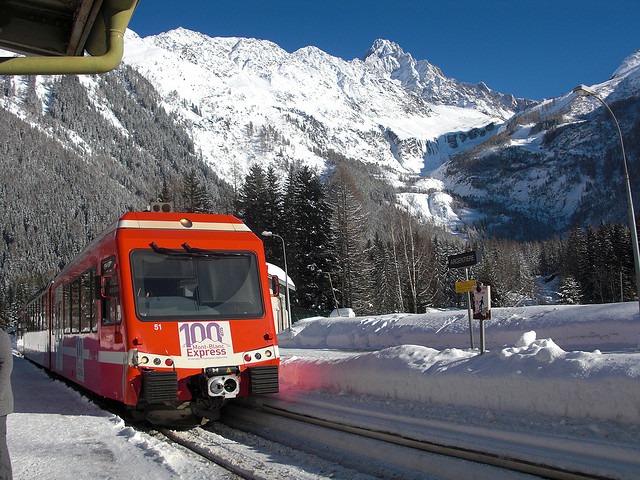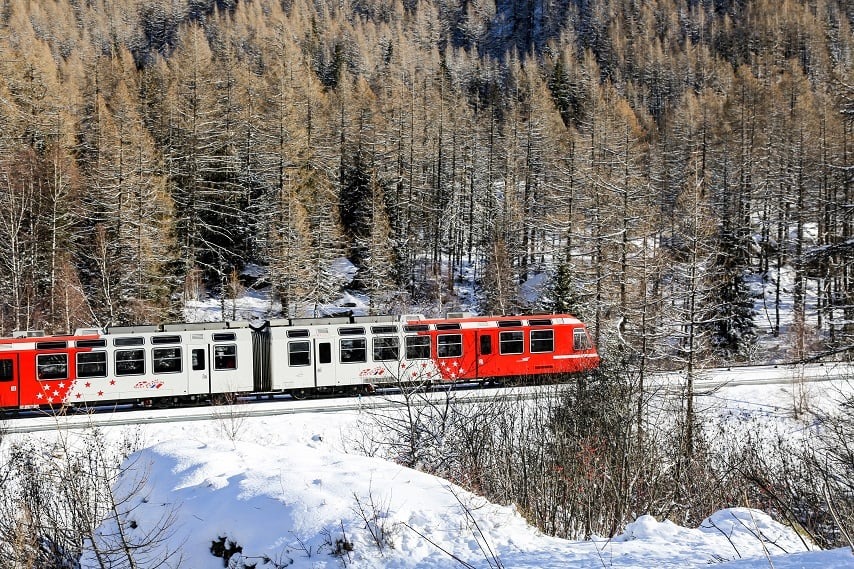
Our expert in leisurely travel opts for the off-peak train, only to find that the supposedly ‘express’ cross-border train is wonderfully unhurried
Martigny boasts a picturesque location where the River Dranse gracefully cascades to meet the Rhône in Switzerland’s Valais canton. As a natural stopping point, the town welcomes travelers embarking on the renowned Grand St Bernard route towards Italy
Switzerland boasts numerous renowned meter-gauge mountain railways, and three particularly remarkable lines stand out as they are actively marketed to international tour operators and possess the capacity to accommodate large groups. These three popular attractions include the magnificent Bernina Railway, connecting the Upper Engadine with Tirano in Italy, the steeply inclined railway from Brig to Andermatt and beyond (frequented by the Glacier Express), and the splendid GoldenPass route that stretches westward from Thunersee through the Simme Valley to Gstaad and Montreux
In contrast, the Mont-Blanc Express railway, operating hourly between Martigny and Saint-Gervais-les-Bains in France, may not receive as much acclaim, but in my opinion, it offers equally rewarding experiences compared to the Bernina, Glacier, and GoldenPass routes. The Mont-Blanc Express confronts the challenges posed by the terrain as it traverses rugged rocky landscapes above the Trient Gorge, and then proceeds alongside the forebodingly named Eau Noire, crossing the border into France. Venturing through a lengthy tunnel, the railway eventually descends into the scenic Chamonix Valley, tracing the path of the River Arve until reaching Saint-Gervais-les-Bains, where connections to the Geneva area are available.
The train meanders along towering cliffs, winding and curving, offering a breathtaking display of panoramic vistas that will leave you constantly gazing in awe
Despite its name, the Mont-Blanc Express is far from a swift ride. Covering a distance of 24 miles (38km) from Martigny to Saint-Gervais, the journey lasts well over two hours, with an average speed of only 15 mph. Along the route, there are more than two dozen intermediate stations, although many are only serviced upon request. During my own trip in May 2023, I dedicated an entire day to this leisurely adventure, making stops at various points of interest along the way.
Impressive feats of engineering
During the 1880s, the concept of constructing a narrow-gauge mountain railway from the Valais region to Chamonix in France gained momentum. Investors were captivated by the success of Niklaus Riggenbach’s rack system, which had previously enabled cog railways to reach isolated mountain communities, notably demonstrated on the Rigi Railway in 1871. However, it took until 1908 for the railway line from Martigny to Saint-Gervais via Chamonix to be fully completed. Initially, operations were suspended during the winter months, but improved avalanche protection eventually facilitated year-round service. When the decision to electrify the route arose, a debate emerged regarding the optimal method: third rail or overhead wires. Neither side emerged as the victor, resulting in a hybrid approach with a combination of both systems employed along the line

Platform 40 at Martigny station may easily go unnoticed, tucked away beyond the main platforms. The Mont-Blanc Express, adorned in red and white, quietly departs from Platform 40, devoid of any grand spectacle. As it sets off, a captivating sight unfolds to the left: a glimpse of the formidable ravine carved by the cascading River Trient, originating from the glaciated peaks in the distant southern region. The steep ascent begins, and I soon understand why the engineers chose a cog railway for this particular segment of the line. The train gracefully passes alongside majestic cliffs, maneuvering through twists and turns, treating passengers to a splendid array of panoramic vistas that require craning of the neck.
My first stop is Salvan, a charming village featuring a tidy station designed in the traditional Alpine chalet style. The road adjacent to the station bears the name Rue Marconi, serving as a reminder of Italian inventor Guglielmo Marconi’s early experiments in wireless telegraphy conducted in this very location. Boarding the subsequent train an hour later, we swiftly reach an elevation of one thousand meters, greeted by welcome hints of spring sunshine.
Upon emerging from the tunnel, the train enters the sunlit valley of the River Arve, revealing magnificent vistas as it descends towards Chamonix
A voice announcement echoes through the train: “Next stop: Le Trétien.” The Mont-Blanc Express obediently comes to a halt at Le Trétien station. Seizing the opportunity, I decide to disembark on a whim. Le Trétien is a picturesque village perched high above the Trient Valley, serving as a starting point for hikers seeking to explore the captivating Trient Gorge. During the golden era of tourism development in the region, Le Trétien and its surroundings were overlooked as resorts like Zermatt, Crans-Montana, and Chamonix gained prominence. However, by the 1880s, intrepid travelers began to make their way to Salvan and Le Trétien, enticed by the enchanting combination of glaciers, rugged landscapes, and idyllic charm. As I stroll through the steep alleys and lanes of Le Trétien for a delightful hour, I encounter only one other person, and our paths cross twice, each time accompanied by a reciprocal smile and a nod.
All too soon, I find myself back at the solitary platform of Le Trétien station, signaling with a wave of my hand for the approaching train to make a stop. For the third time today, I embark on a journey towards France, and within a mere 20 minutes, we gracefully cross the border.



